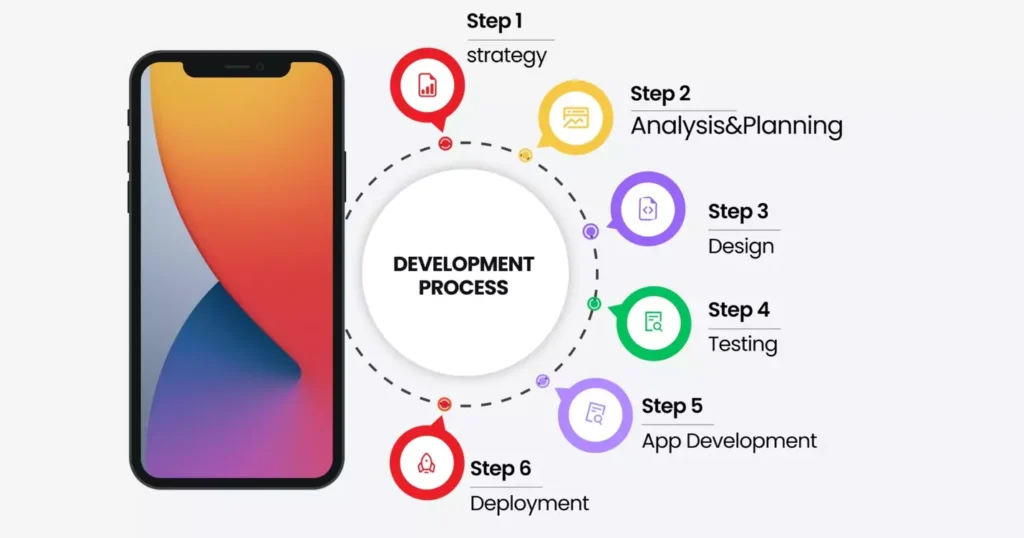Do a comprehensive market scan before the development of your mobile app. Determine what users want and how your mobile app can solve their challenges. For instance, why did the food-ordering app Zomato succeed? It simplified the food ordering process.
Before coding occurs, designers build prototypes to illustrate the app’s appearance and function.
An app needs to be designed in a manner that is simple and easy to use. The layout should be intuitive. Take WhatsApp, for instance. Its design is simplistic and straightforward, making it accessible to nearly everyone.
Developers build mobile applications with the help of coding languages and frameworks like Flutter. Flutter is a no-code development application that aids in developing cross-platform applications utilizing one code. For people who lack coding skills, a no-code development platform like Bubble allows the building of applications through dragging and dropping elements.
After the app is created, it must undergo a testing phase. Testing is critical to ensure that the app works on multiple devices. After the testing phase, it is published in app stores like Google Play and Apple.
Changing mobile apps often need to be updated to remove errors and increase efficiency. Companies must update their applications frequently to maintain their business edge.
Developers must master specific programming languages to target iOS and Android platforms. An iOS application is developed through Swift, while an Android one uses Kotlin or Java.
By using Flutter, developers can achieve the same outcome using a single code base for both iOS and Android. This is incredibly time-efficient.
No-code platforms are an excellent option for non-coders. They enable users to assemble applications by clicking on elements and selecting templates.

